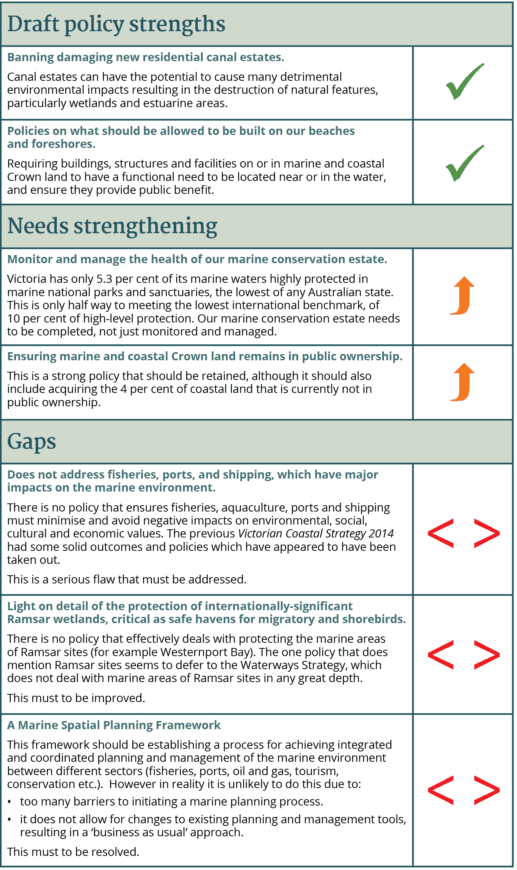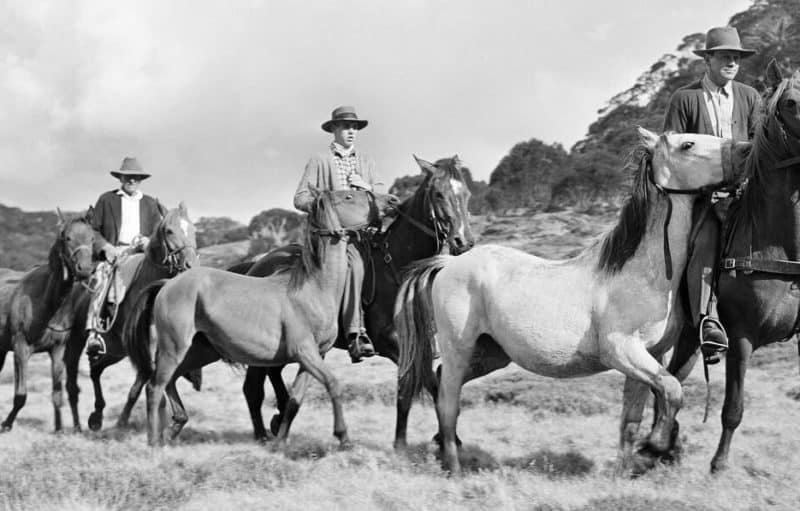PARK WATCH September 2019 |
VNPA’s Nature Conservation Campaigner Shannon Hurley gives an overview of Victoria’s ongoing marine and coastal reforms.
Our seas and shores support all life, and they have certainly played an important role in shaping mine. As a kid I grew up enjoying weekends with my family at the beach, feeling invigorated from dipping into our cool temperate waters and having the sand in between my toes.
As I grew older, the ocean waves continued to shape my life. I learnt to scuba dive and further experienced the beauty of our unique underwater world. This became the core of my inspiration to work to protect it.
Every time I immersed myself, I would see something new. Right here on our door step we have the only sea dragons found on the entire planet, the world greatest diversity of red and brown seaweeds, crabs and shrimp – all playing their part in our complex, interlinked web of life.
Victoria’s unique coastline is unlike any other in the world, having been shaped by geological isolation, currents and climate. As a result, we are incredibly lucky to have an incredibly high species richness and diversity, with many species found here and nowhere else (known as endemic).
Our marine and coastal environments are essential for life. They provide enormous environmental, social and cultural benefits to our communities, from the air we breathe, to the food we eat, and the places we enjoy for recreation.
In the face of existing and emerging threats such as climate change, pollution, and the increasing pressures of commercial and recreational activities, it is essential we plan for and manage them well.
It is not simply the 12,000 Victorian marine species (and counting) and habitats we are protecting, but our own lives and livelihoods. Thinking about climate change terrifies the ‘bejeebers’ out of me, where already are we seeing the impacts of storm and surge damage on our cliffs and infrastructure, warming of our waters, and imbalances of and movements of species, which is putting the balance out of whack.
How we use, and what we take, from our marine and coastal environments will affect the ability of them to either build or degrade their resilience, and therefore the response to climate change. The decisions we make now will impact us directly, as it is south-eastern Australia where higher oceanic temperatures are projected.
Blue print
The release of the Victorian Government’s draft Marine and Coastal Policy needs to be treated as the blue print for the protection of our unique and highly-valued marine and coastal environments.
The release of the draft is the latest development in the ongoing reforms into Victoria’s marine and coastal planning and management, led by the Victoria’s Department of Environment, Land, Water and Planning.
The new Marine and Coastal Act 2018 requires this new Marine and Coastal Policy, to outline the policy position on matters relating to the marine and coastal environment at a state level, and guide decision-makers in implementing these policies.
The policy will include the development of a marine spatial planning framework, and a marine and coastal strategy will later outline the actions to achieve the policy.
The policy will be co-endorsed by Ministers of Acts relevant to the marine and coastal environment such as fisheries, ports and tourism, which can be a fraught process.
When finalised by the end of the year, the policy will guide decision-makers including local councils and land managers in the planning, management and sustainable use of our marine and coastal environment for the next 10–15 years. The draft builds on the legacy established through the old Victorian Coastal Strategy and we see it as a good start. But while it has significant strengths, it also has significant gaps that must be addressed before it is finalised.
Blue commons
When it comes to completing and managing Victoria’s marine and coastal conservation estate, the bar needs to be raised much higher.
Marine protected areas (MPAs) such as marine national parks and sanctuaries are among the most essential tools for biodiversity protection and resilience (see following article). International benchmarks have set the bare minimum for high-level marine protection at 10 per cent, with a long-term aspiration of the International Union for Conservation of Nature (IUCN) is for at least 30 per cent in no-take zones.
Currently, Victoria has only 5.3 per cent of our waters in marine national parks and sanctuaries. This is the lowest of any Australian state – we really need to be striving to put us back in the leaders position. With 100 per cent – all 10,000 square kilometres – of our marine waters bring publicly owned they are truly a ‘blue commons’ that deserves better protection.
VNPA’s 2014 Nature Conservation Review found at least 20 additional marine areas that are worthy of protection and which could fill these significant gaps in our current marine protected area network.
No matter what our interest is in Victoria’s largest common space, it is crucial we address these impacts to sustain a healthy, productive and biodiverse marine environment. This needs to involve proper, coordinated planning and management where all interested parties actually change the way we currently do business, as if our lives depend on it – because, in many ways, they do.
Did you like reading this article? Want to be kept up to date about this and other nature issues in Victoria? Subscribe to our email updates.
You can also receive our print magazine Park Watch four times a year by becoming a member. Find out more here.

